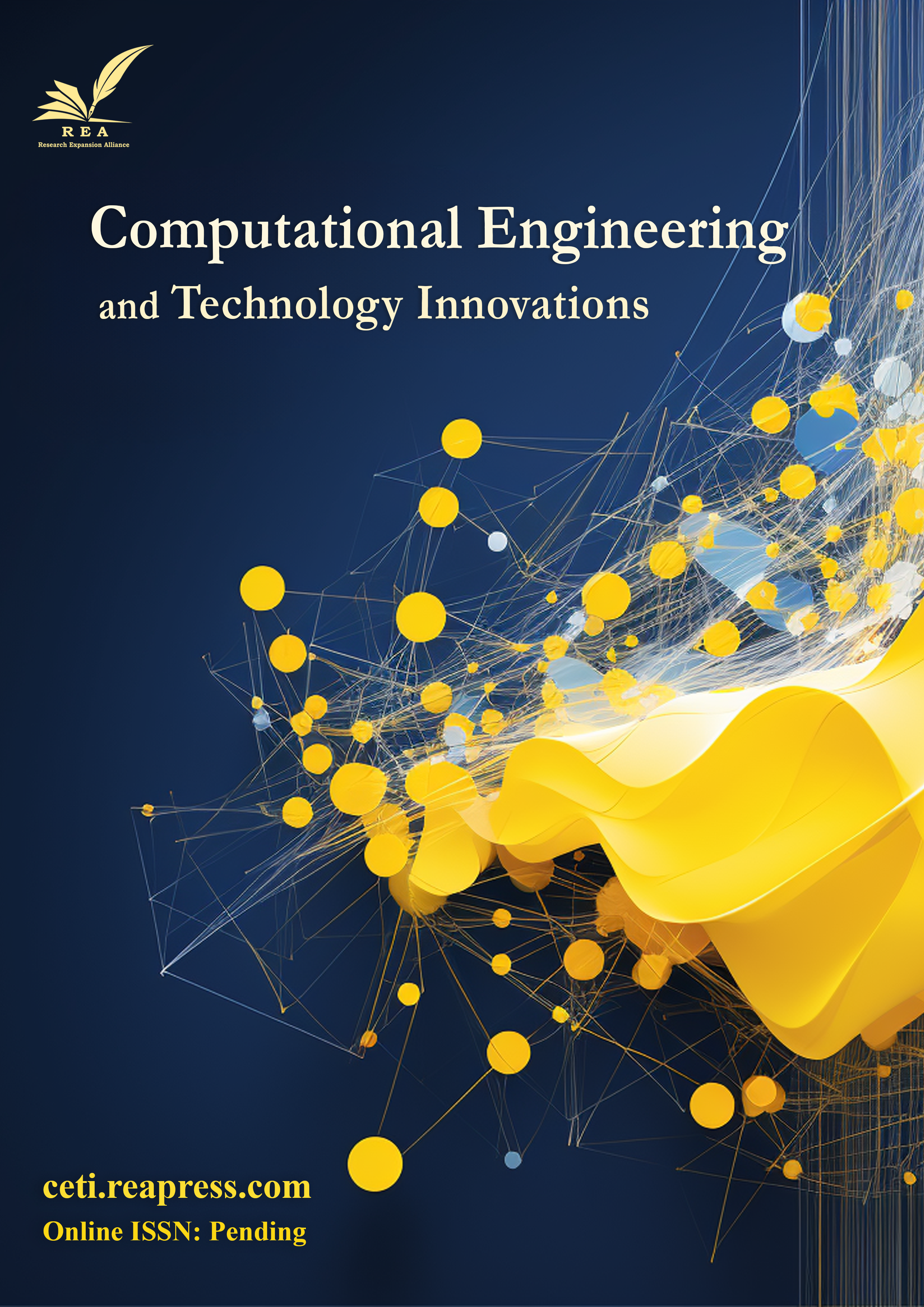AI-Powered Forensic Face Drawing: An Overview of the Research on Methodological, Theoretical, and Real-World Defects in Suspect Identification Systems
Abstract
Artificial Intelligence (AI) has transformed forensic facial sketching, introducing advanced deep learning architectures for suspect identification in constrained-data environments. This literature survey systematically analyzes the state of the art in AI-driven forensic facial sketching, identifying critical gaps across methodological, theoretical, and practical dimensions. Methodologically, we highlight the lack of comparative studies across deep learning architectures (e.g., GANs, VAEs, diffusion models), the over-reliance on accuracy as the sole evaluation metric, and the insufficient investigation of algorithmic robustness to noise and distortions. Theoretically, we identify gaps in understanding how AI models interpret and reconstruct facial features from sparse witness descriptions, as well as in the limited research on inference mechanisms with incomplete data. Practically, we note deficiencies in real-world scenario testing, user-centric design for forensic practitioners, and system scalability for operational deployment. By synthesizing existing literature, this survey not only identifies these interconnected gaps but also proposes future research directions to develop more robust, efficient, and forensically applicable AI systems. Our analysis emphasizes the need for standardized benchmarks, comprehensive evaluation protocols, and interdisciplinary collaboration to advance the field.
Keywords:
Forensic facial sketching, Deep learning architectures, Generative adversarial networks, Suspect identification, Evaluation metricsReferences
- [1] Jain, A. K., & Li, S. Z. (2011). Handbook of face recognition (Vol. 1). Springer. https://doi.org/10.1007/978-0-85729-932-1
- [2] Frowd, C. D., Hancock, P. J. B., & Carson, D. (2004). Evofit: A holistic, evolutionary facial imaging technique for creating composites. ACM transactions on applied perception (tap), 1(1), 19–39. https://doi.org/10.1145/1008722.1008725
- [3] Dash, A., Gamboa, J. C. B., Ahmed, S., Liwicki, M., & Afzal, M. Z. (2017). Tac-gan-text conditioned auxiliary classifier generative adversarial network. ArXiv preprint arxiv:1703.06412. https://doi.org/10.48550/arXiv.1703.06412
- [4] Frowd, C., Bruce, V., McIntyre, A., & Hancock, P. (2007). The relative importance of external and internal features of facial composites. British journal of psychology, 98(1), 61–77. https://doi.org/10.1348/000712606X104481
- [5] Turk, M., & Pentland, A. (1991). Eigenfaces for recognition. Journal of cognitive neuroscience, 3(1), 71–86. https://doi.org/10.1162/jocn.1991.3.1.71
- [6] Krizhevsky, A., Sutskever, I., & Hinton, G. E. (2017). Imagenet classification with deep convolutional neural networks. Communications of the ACM, 60(6), 84–90. https://doi.org/10.1145/3065386
- [7] Ho, J., Jain, A., & Abbeel, P. (2020). Denoising diffusion probabilistic models. Advances in neural information processing systems, 33, 6840–6851. http://dx.doi.org/10.48550/arXiv.2006.11239
- [8] Mirsky, Y., & Lee, W. (2021). The creation and detection of deepfakes: A survey. ACM computing surveys (CSUR), 54(1), 1–41. https://doi.org/10.1145/3425780
- [9] Mirza, M., & Osindero, S. (2014). Conditional generative adversarial nets. ArXiv preprint arxiv:1411.1784. https://doi.org/10.48550/arXiv.1411.1784
- [10] Karras, T., Aila, T., Laine, S., & Lehtinen, J. (2017). Progressive growing of gans for improved quality, stability, and variation. ArXiv preprint arxiv:1710.10196. https://doi.org/10.48550/arXiv.1710.10196
- [11] Karras, T., Laine, S., Aittala, M., Hellsten, J., Lehtinen, J., & Aila, T. (2020). Analyzing and improving the image quality of stylegan. Proceedings of the IEEE/CVF conference on computer vision and pattern recognition (pp. 8110-8119). http://dx.doi.org/10.1109/CVPR42600.2020.00813
- [12] Kingma, D. P., Welling, M., & others. (2019). An introduction to variational autoencoders. Foundations and trends®in machine learning, 12(4), 307–392. http://dx.doi.org/10.1561/2200000056
- [13] Yang, L., Zhang, Z., Song, Y., Hong, S., Xu, R., Zhao, Y., … & Yang, M. H. (2023). Diffusion models: A comprehensive survey of methods and applications. ACM computing surveys, 56(4), 1–39. https://doi.org/10.1145/3626235
- [14] Zhang, Z., Song, Y., & Qi, H. (2017). Age progression/regression by conditional adversarial autoencoder. Proceedings of the IEEE conference on computer vision and pattern recognition (pp. 5810–5818). IEEE. http://dx.doi.org/10.1109/CVPR.2017.463
- [15] Snell, J., Swersky, K., & Zemel, R. (2017). Prototypical networks for few-shot learning. Advances in neural information processing systems, 30. http://dx.doi.org/10.48550/arXiv.1703.05175
- [16] Shorten, C., & Khoshgoftaar, T. M. (2019). A survey on image data augmentation for deep learning. Journal of big data, 6(1), 1–48. https://doi.org/10.1186/s40537-019-0197-0
- [17] Zhuang, F., Qi, Z., Duan, K., Xi, D., Zhu, Y., Zhu, H., … & He, Q. (2020). A comprehensive survey on transfer learning. Proceedings of the IEEE, 109(1), 43–76. https://doi.org/10.1109/JPROC.2020.3004555
- [18] Odena, A., Olah, C., & Shlens, J. (2017). Conditional image synthesis with auxiliary classifier gans. International conference on machine learning (pp. 2642–2651). Proceedings of machine learning research (PMLR). https://doi.org/10.48550/arXiv.1610.09585
- [19] Vaswani, A., Shazeer, N., Parmar, N., Uszkoreit, J., Jones, L., Gomez, A. N., … & Polosukhin, I. (2017). Attention is all you need. Advances in neural information processing systems, 30. https://doi.org/10.48550/arXiv.1706.03762
- [20] Chen, Y. S., Wang, Y. C., Kao, M. H., & Chuang, Y. Y. (2018). Deep photo enhancer: Unpaired learning for image enhancement from photographs with gans. Proceedings of the ieee conference on computer vision and pattern recognition (pp. 6306–6314). IEEE. http://dx.doi.org/10.1109/CVPR.2018.00660
- [21] Ulery, B. T., Hicklin, R. A., Buscaglia, J., & Roberts, M. A. (2011). Accuracy and reliability of forensic latent fingerprint decisions. Proceedings of the national academy of sciences, 108(19), 7733–7738. https://doi.org/10.1073/pnas.1018707108
- [22] Frowd, C. D., Pitchford, M., Bruce, V., Jackson, S., Hepton, G., Greenall, M., … & Hancock, P. J. B. (2011). The psychology of face construction: giving evolution a helping hand. Applied cognitive psychology, 25(2), 195–203. https://doi.org/10.1002/acp.1662
- [23] Goodfellow, I. J., Shlens, J., & Szegedy, C. (2014). Explaining and harnessing adversarial examples. ArXiv preprint arxiv:1412.6572. https://doi.org/10.48550/arXiv.1412.6572
- [24] Frowd, C., Bruce, V., & Hancock, P. J. B. (2009). Evolving facial composite systems. Forensic update. https://eprints.ncl.ac.uk/157049
- [25] Karras, T., Laine, S., & Aila, T. (2019). A style-based generator architecture for generative adversarial networks. Proceedings of the IEEE/CVF conference on computer vision and pattern recognition (pp. 4401–4410). IEEE. https://doi.org/10.1109/CVPR.2019.00453
- [26] Kingma, D. P., & Welling, M. (2013). Auto-encoding variational bayes. ArXiv preprint arxiv:1312.6114. https://doi.org/10.48550/arXiv.1312.6114
- [27] Solomon, C. J., Gibson, S. J., & Maylin, M. (2012). EFIT-V: Evolutionary algorithms and computer composites. Craniofacial identification, 24–41. https://B2n.ir/ze2863
- [28] Mnookin, J. L., Cole, S. A., Dror, I. E., & Fisher, B. A. J. (2010). The need for a research culture in the forensic sciences. UCLA law review., 58, 725. https://heinonline.org/HOL/LandingPage?handle
- [29] Sokolova, M., & Lapalme, G. (2009). A systematic analysis of performance measures for classification tasks. Information processing & management, 45(4), 427–437. https://doi.org/10.1016/j.ipm.2009.03.002
- [30] Phillips, P. J., Yates, A. N., Hu, Y., Hahn, C. A., Noyes, E., Jackson, K., … & others. (2018). Face recognition accuracy of forensic examiners, superrecognizers, and face recognition algorithms. Proceedings of the national academy of sciences, 115(24), 6171–6176. https://doi.org/10.1073/pnas.1721355115
- [31] Akhtar, N., & Mian, A. (2018). Threat of adversarial attacks on deep learning in computer vision: A survey. Ieee access, 6, 14410–14430. https://doi.org/10.1109/ACCESS.2018.2807385
- [32] Wells, G. L., & Olson, E. A. (2003). Eyewitness testimony. Annual review of psychology, 54(1), 277–295. https://doi.org/10.1146/annurev.psych.54.101601.145028
- [33] Hendrycks, D., & Dietterich, T. (2019). Benchmarking neural network robustness to common corruptions and perturbations. ArXiv preprint arxiv:1903.12261. https://doi.org/10.48550/arXiv.1903.12261
- [34] Samek, W., Montavon, G., Vedaldi, A., Hansen, L. K., & Müller, K.-R. (2019). Explainable AI: interpreting, explaining and visualizing deep learning (Vol. 11700). Springer nature. https://B2n.ir/hz3930
- [35] Higgins, I., Amos, D., Pfau, D., Racaniere, S., Matthey, L., Rezende, D., & Lerchner, A. (2018). Towards a definition of disentangled representations. ArXiv preprint arxiv:1812.02230. https://doi.org/10.48550/arXiv.1812.02230
- [36] Arora, S., & Zhang, Y. (2017). Do gans actually learn the distribution? an empirical study. ArXiv preprint arxiv:1706.08224. https://doi.org/10.48550/arXiv.1706.08224
- [37] Begoli, E., Bhattacharya, T., & Kusnezov, D. (2019). The need for uncertainty quantification in machine-assisted medical decision making. Nature machine intelligence, 1(1), 20–23. https://doi.org/10.1038/s42256-018-0004-1
- [38] Abdar, M., Pourpanah, F., Hussain, S., Rezazadegan, D., Liu, L., Ghavamzadeh, M., … & others. (2021). A review of uncertainty quantification in deep learning: Techniques, applications and challenges. Information fusion, 76, 243–297. https://doi.org/10.1016/j.inffus.2021.05.008
- [39] Blanz, V., & Vetter, T. (2023). A morphable model for the synthesis of 3D faces. Seminal graphics papers: pushing the boundaries (pp. 157–164). publication history. https://doi.org/10.1145/3596711.3596730
- [40] White, D., Phillips, P. J., Hahn, C. A., Hill, M., & O’Toole, A. J. (2015). Perceptual expertise in forensic facial image comparison. Proceedings of the royal society B: Biological sciences, 282(1814), 20151292. https://doi.org/10.1098/rspb.2015.1292
- [41] Newsham, G. R., Cetegen, D., Veitch, J. A., & Whitehead, L. (2010). Comparing lighting quality evaluations of real scenes with those from high dynamic range and conventional images. ACM transactions on applied perception (TAP), 7(2), 1–26. https://doi.org/10.1145/1670671.1670677
- [42] Cook, M., Marnerides, A., Johnson, C., & Pezaros, D. (2023). A survey on industrial control system digital forensics: Challenges, advances and future directions. IEEE communications surveys & tutorials, 25(3), 1705–1747. https://doi.org/10.1109/COMST.2023.3264680
- [43] He, S., Lei, Y., Zhang, Z., Sun, Y., Li, S., Zhang, C., & Ye, J. (2025). Identity deepfake threats to biometric authentication systems: Public and expert perspectives. ArXiv preprint arxiv:2506.06825. https://doi.org/10.48550/arXiv.2506.06825
- [44] Green, B., & Chen, Y. (2019). The principles and limits of algorithm-in-the-loop decision making. Proceedings of the acm on human-computer interaction, 3(CSCW), 1–24. https://doi.org/10.1145/3359152
- [45] AlMutawa, A., Ikuesan, R. A., & Said, H. (2024). Towards a comprehensive metaverse forensic framework based on technology task fit model. Future internet, 16(12), 437. https://doi.org/10.3390/fi16120437
- [46] Talib, M. A., Majzoub, S., Nasir, Q., & Jamal, D. (2021). A systematic literature review on hardware implementation of artificial intelligence algorithms. The journal of supercomputing, 77(2), 1897–1938. https://doi.org/10.1007/s11227-020-03325-8
- [47] Ndibe, O. S. (2025). AI-driven forensic systems for real-time anomaly detection and threat mitigation in cybersecurity infrastructures. International journal of research publication and reviews, 6(5), 389–411. https://doi.org/10.55248/gengpi.6.0525.1991


